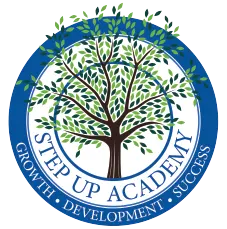The Best Note-Taking Methods for Students: A Comprehensive Guide
The skill of note-taking is imperative to ensure that the students capture and store information during the lectures, readings, etc. Different forms of note-taking methods have been developed to suit the different learning needs and also preferences. The selection of a note-taking approach is based on the nature of the content and other issues such as likes, skills, or intentions.
1. Cornell Method
The Cornell Method is a systematic approach that divides the note page into three sections: Cues or questions are placed in a narrow left column, notes take up the wider right one and at the bottom of this section there is enough space where important ideas can be summarized.
When to Use: Suitable for lectures, textbooks, and any other material that has the essential concepts. It fosters active participation by prompting the students to articulate, review, and also refresh their learning through summarization.
Pros: Encourages organization and summarization. Simple to check and self-test with the cue column. Promotes active learning in schools and tutoring centers.
Cons: It may need some time to get used to the new style. It is disciplined to use all the sections every single time.

2. Mind Mapping
A mind map is the act of visualizing thoughts, wherein a main topic spreads out across many related sub-topics. It’s a non-sequential approach that fosters innovation and the linking of minds.
When to Use: It is very good for brainstorming sessions, diagramming complex ideas and also visual thinking. Works well for the subjects with complicated relations.
Pros: Fosters creativity and associations. Offers a very comprehensive understanding of an issue. Engages visual and spatial memory.
Cons: May not suit linear thinkers. It can become very complicated, however, for detailed note-taking. It is a very challenging task to produce an efficient mind map.

3. Outline Method
Under the Outline note-taking method, the information is organized in a hierarchical order inclusive of major topics and also subtopics arranged in an ordered manner. It is sequential for easy comprehension.
When to Use: It is most appropriate for the organization of structured lectures, textbooks, and subjects with a clear hierarchy of information. It is very suitable for the tutors who like to be organized.
Pros: It helps to create a clear structure of the given information. Easy to follow and review. Effective for linear thinkers.
Cons: May miss the interplay between non-linear ideas. Less attractive visually than the other options.

4. The Charting Method
Charting refers to the systematic organization of information through the use of tables or grids. It is very appropriate for topics that have comparisons, contrasts, and also classification elements.
When to Use: It is best suited to arrange the data, historical moments comparisons, and everything that contains distinct categories.
Pros: Facilitates clear organization of information. Simplifies complex data. Enhances visual learning.
Cons: This might not be appropriate for the subjects that need elaborate explanations. The time-consuming process of making detailed graphs.

5. Sentence Method
The Sentence Method entails writing down the notes in sentences, and paraphrasing information to a more story-like register. It gives a thorough and very logical description of the contents.
When to Use: It is very appropriate for lectures, discussions, and also disciplines that require in-depth analysis of the concepts. Suitable for users who prefer a storytelling method.
Pros: Provides a comprehensive understanding. Suitable for detailed information. Imitates writing an essay or a report.
Cons: May be time-consuming. If not done selectively, it can result in information overload. Requires strong summarization skills.

Benefits of Note-taking methods
Such advantages that note-taking offers are many, they could significantly contribute to the success of learning in your tutoring centers, schools, and also colleges. Here are some key advantages of note-taking:
Enhanced Understanding: Active note-taking involves a lot of interaction with the information and leads to a better understanding of the subject. The summarizing, paraphrasing and also organizing of information supports the internalization phenomena.
Retention of Information: Best note-taking methods enhances long-term recall by engaging several cognitive processes. Reviewing notes frequently ensures that the memory of the taught information is cemented, and also strengthens long-term retention.
Organization of Thoughts: Note taking enhances the organization of the thought processes and ideas forming an organized representation for the information. Properly structured notes make the revision and other key concept recollections much easier.
Facilitation of Review: Notes can be used as a concise study aid for the test preparation, quizzes and also assignments. Streamlined review helps to pinpoint the areas of strength and also weakness, giving direction in which best efforts can be made.
Active Learning: Taking notes is a very active form of learning that also helps to keep the students focused during their lectures or reading sessions. Active information processing leads to a much better understanding of any subject matter.
Personalized Learning: It can be achieved through best note-taking methods, as people can adjust techniques according to their preferred literacy patterns. Learners can underscore the information that they find especially applicable or problematic.
Time Management: Effective note-taking requires the information to be captured in key points; hence, it also takes a shorter time for revision. Organized notes assist the students in regulating their time concerning studies.
Summary:
Overall, the decision of note-taking medium largely rests on the preference, content implication, and also intended learning outcome. By trying new ways and developing them under the circumstances, students may discover what works best for their individual needs.


